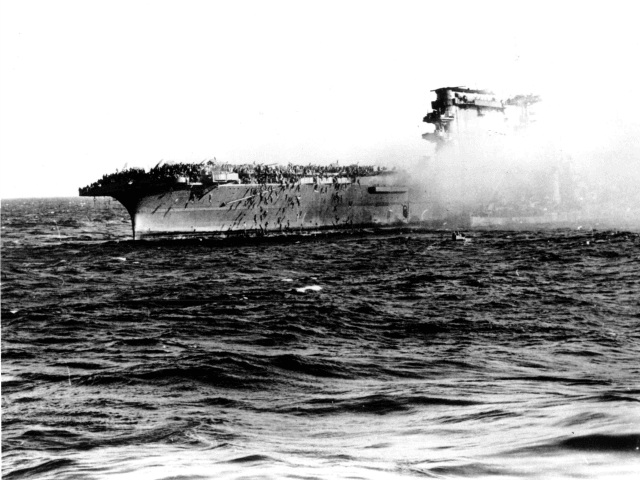U.S. President Donald Trump has sent a message of thanks to Australia as World War II navy veterans from Down Under head to America and commemorations begin to mark the 75th anniversary of the Battle of the Coral Sea.
U.S. Consul General Valerie Fowler spoke of the sacrifices made and the enduring legacy of Coral Sea for the American alliance during a service in Australia on Saturday before reading the message from the president, the ABC reports.
“Melania and I send best wishes to the wonderful people of Australia on this important occasion,” the message said.
On Tuesday, a delegation of Australian survivors from the epic battle will be in New York to join Prime Minister Malcolm Turnbull for a Coral Sea memorial service on board retired US Naval carrier Intrepid, which will also be attended by Mr. Trump.
It almost certainly will be the last major commemoration to be attended by those who fought in one of the great sea battles of World War II that also re-defined the nature of naval warfare.
The Battle of the Coral Sea was fought entirely by aircraft attacking ships; the opposing ships did not make visual contact or exchange direct fire at any time.
The air-sea battle was contested between May 4 and May 8, 1942. It came about after the Japanese despatched an invasion fleet to take Port Moresby, Papua in early May, 1942. They also sent a carrier force to patrol into the Coral Sea to intercept any American carriers sent to thwart their planned attack. The Japanese landed at Tulagi in the Solomons on May 2 as their invasion fleet, protected by carrier air support, headed towards Port Moresby on the south coast of Papua.
The Allies had cracked the main Japanese codes and deciphered Japanese radio messages. This enabled an American carrier force, supported by Australian cruisers and destroyers, to wait and intercept the invaders after Admiral Chester Nimitz, Commander-in-Chief of the U.S. Pacific Fleet, had ordered his two available carrier groups, Rear Admiral Frank Fletcher’s Task Force 17, built around USS Yorktown and Rear Admiral Aubrey Fitch’s Task Force 11, centred on USS Lexington, into the Coral Sea.
The Allied group was under the command of Rear Admiral Fletcher of the United States Navy (USN). Rear Admiral John Crace commanded the Australian heavy cruisers Hobart and Australia in the joint taskforce.
On 7 May, American aircraft sank the Japanese auxiliary carrier Shoho. The next day the Japanese located and attacked the American carrier USS Lexington, which caught fire and sank (pictured) later the same afternoon. Both the American carrier USS Yorktown and the Japanese carrier Shokaku were damaged on May 8. The Japanese withdrew soon after.
Over four days more than 70 aircraft and ships were destroyed, but the Japanese advance south was successfully halted and the prospect of an invasion of Australia ended.
More importantly, it was the first time the Japanese had been halted during their southwards advance across the Pacific.
Follow Simon Kent on Twitter: Follow @SunSimonKent or e-mail to: skent@breitbart.com

COMMENTS
Please let us know if you're having issues with commenting.